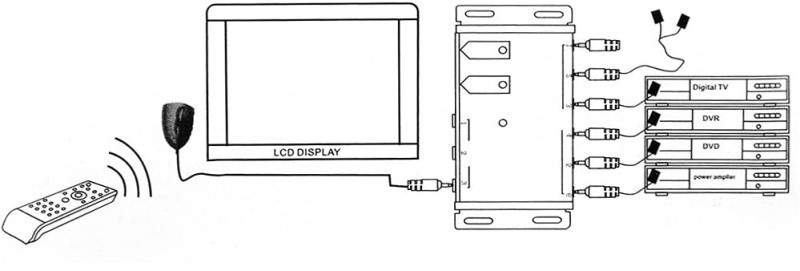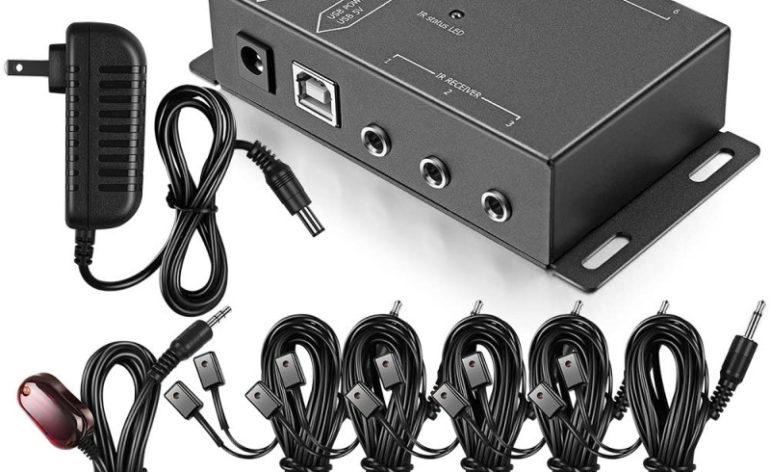Installing an IR Remote Repeater to Hide Your AV Equipment
Not every AV enthusiast keeps their equipment in plain sight. Some prefer to have their equipment hidden within cabinets. Others have their equipment in a separate room. Some have the equipment in other locations within their room. What these all have in common is difficulty using traditional line-of-sight IR remote controls. That’s where installing an IR remote repeater can save the day.
I know what you will say! “Aren’t most remotes Bluetooth now?” You are correct, many are moving that way. However, in my setup, my Denon receiver, LG OLED, and CD player are IR-based, while my streaming boxes are Bluetooth. So while we might eventually see Bluetooth as the standard, we aren’t there yet. Plus, most Bluetooth-enabled boxes still have an IR input as a backup!
Next, you say “Get a Harmony Hub and remote!” Would if I could! Harmony is discontinued and the only hub-based remote that is being offered is the Sofabaton X1, and it is still collecting money on Kickstarter and not expected to be available until late 2021. Don’t worry, I’ll have a review of that soon after it comes out!
What’s left? Rip the doors off your cabinets? Stack your equipment in the middle of the room and run cables to your sources? Give up and go back to just TV speakers? Those are viable, and barbaric options….but have you considered installing an IR remote repeater?
How It Works
An IR remote repeater is very simple in operation. It consists, in its basic form, of 3 components. An IR receiver, a control box, and a series of IR emitters. The IR receiver is the exact same one that is installed in all your equipment. Its function is to receive the IR transmission from your remote and send it to the controller box. The controller box then takes that transmission and sends it out to the IR emitters that are affixed to your equipment. Easy peasy.

Take note: In almost all these installations, all the transmitters (sometimes called flashers) get all the IR commands. In most cases, this isn’t a problem. Very few devices share IR commands. But if you have multiples of the same device (amps, receivers, players), this can create problems. In more complex installations, you might need more than one IR remote repeater in order to keep from having the signals crossed.

Installation
Installation is just as simple. I’ll start from the equipment side, but feel free to do it as you see fit.
- Find the IR receivers on your equipment. In my experience they are marked with “IR” in your user manual. If you can’t find them on a diagram, take a flashlight and shine it on the front of the peice of gear. It should show up as a little square (see picture above).
- In most cases you will affix the emitter directly on top of the IR receiver in your gear with the integrated 2-way tape. Do this for all the equipment you need to control. If your IR emitter won’t reach, you can normally use a 2.5mm or 3.5mm extender cable (depending on the cabling used by the IR remote repeater you bought).
- Place the control box in its location, and plug in the power. Many times you wil have the option of using an included wall wart power cable or a USB power solution. Use the one that makes the most sense to you.
- Plug the emitters into the appropriate ports of the control box. They are usually marked with “IR Emitter.” Unless you have a very fancy one, it shouldn’t matter which port you use.
- Place the IR receiver in a central location. It should have easy line of site to your remotes. Some systems have 2 receivers, so you can place them in different places in your room to get the best coverage. Once placed, plug those into the ports of your control box, generally labelled “IR Receiver.” Again, you can use extender cables if necessary.
- Test and enjoy having your equipment hidden.
Wrap Up
IR remote repeaters are a simple solution for more complex home theater setups. If you just need to extend the reach of your IR remotes into a closed space, this is the solution for you. The upside is that they generally don’t cost that much. Most of the solutions out there can connect to up to 10 pieces of gear and cost under $30.
Do you use an IR remote repeater? Let us know on our Facebook page or the comments below!


